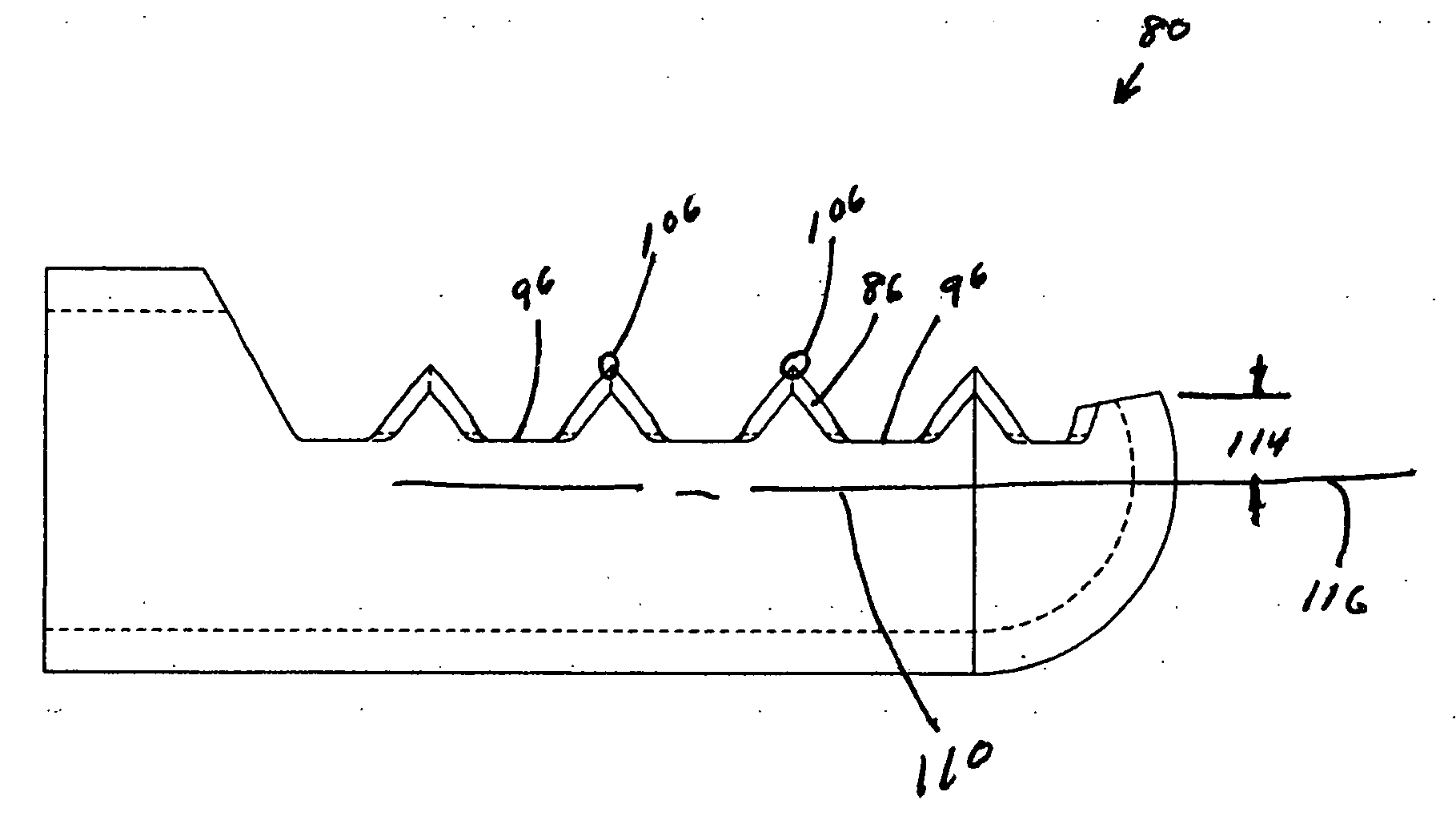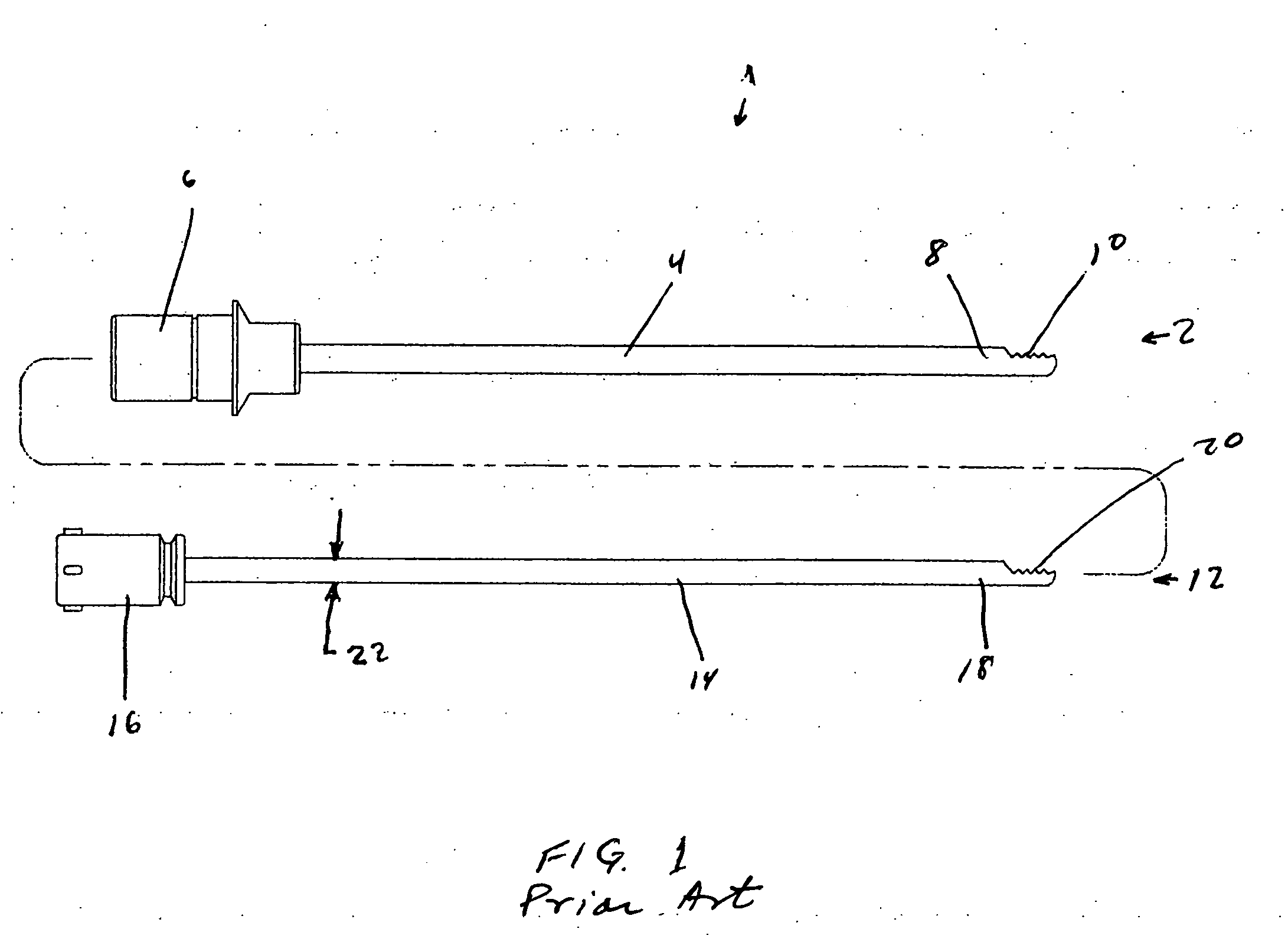Arthroscopic shaver with two pass inner blade and method of manufacturing same
a technology of shaver blade and inner blade, which is applied in the field of shaver blade for arthroscopic surgery, can solve the problems of inability to retain enough “bite” of the inner cutting edge, inability to efficiently cut tissue, and undesirable tearing, etc., and achieves the effect of high resection efficiency
- Summary
- Abstract
- Description
- Claims
- Application Information
AI Technical Summary
Benefits of technology
Problems solved by technology
Method used
Image
Examples
Embodiment Construction
[0077]FIGS. 14 and 15 show the distal end of a shaver 79 formed in accordance with the principles of the present invention and having an inner tube 80 and an outer tube 81.
[0078] The distal end of an improved shaver inner tube with cutting edges formed in accordance with the principles of the present invention is shown in FIGS. 16 through 19. Shaver inner tube 80 has an inner lumen 82, and a cutting window 83 forming a first lateral cutting edge 84 having a plurality of teeth 86 spaced apart by distance 88. Shaver inner tube 80 also has a second lateral cutting edge 90 having a plurality of teeth 92 spaced apart by distance 94, distances 88 and 94 being equal. Teeth 86 are separated by flats 96 and teeth 92 are separated by flats 98. Teeth 86 and teeth 92 do not have a constant cross-section (FIG. 17), but rather decrease in width as they approach the inner lumen of the tube when viewed in a plan view (FIG. 16). Similarly, crests 100 of teeth 86 and crests 102 of teeth 92 are not p...
PUM
| Property | Measurement | Unit |
|---|---|---|
| Angle | aaaaa | aaaaa |
| Angle | aaaaa | aaaaa |
| Angle | aaaaa | aaaaa |
Abstract
Description
Claims
Application Information
 Login to View More
Login to View More - R&D
- Intellectual Property
- Life Sciences
- Materials
- Tech Scout
- Unparalleled Data Quality
- Higher Quality Content
- 60% Fewer Hallucinations
Browse by: Latest US Patents, China's latest patents, Technical Efficacy Thesaurus, Application Domain, Technology Topic, Popular Technical Reports.
© 2025 PatSnap. All rights reserved.Legal|Privacy policy|Modern Slavery Act Transparency Statement|Sitemap|About US| Contact US: help@patsnap.com



